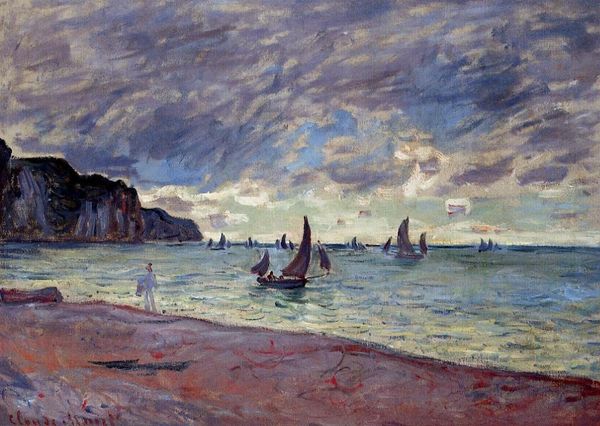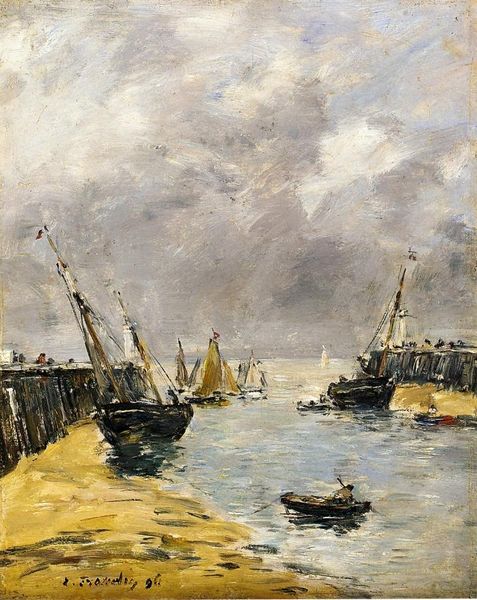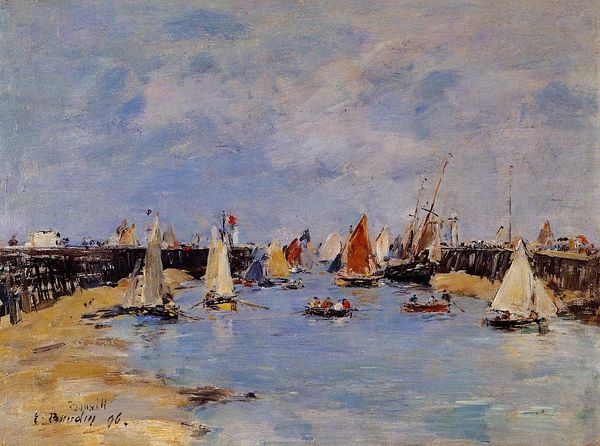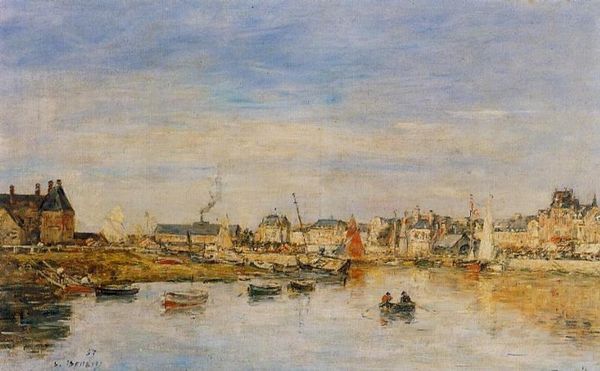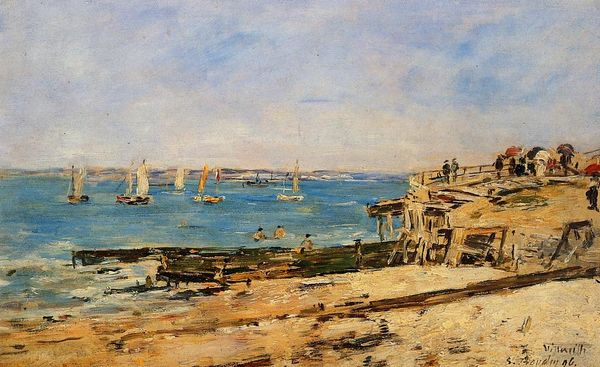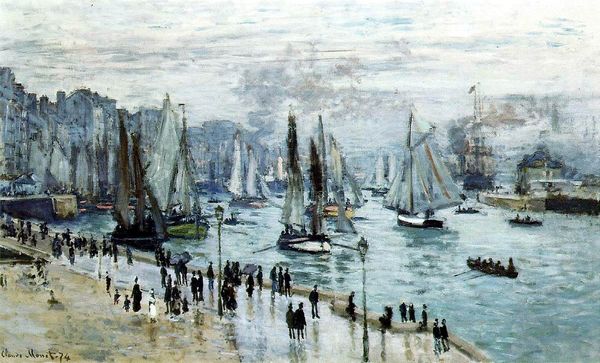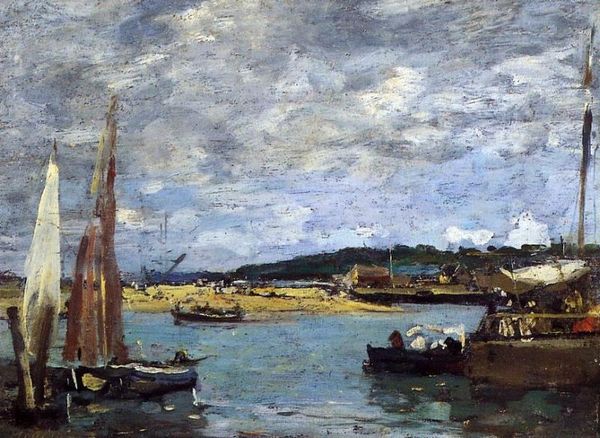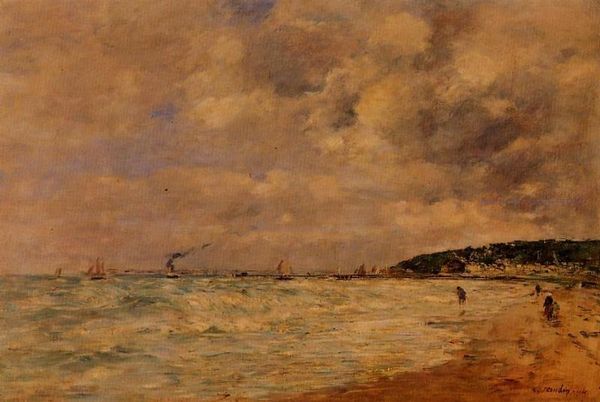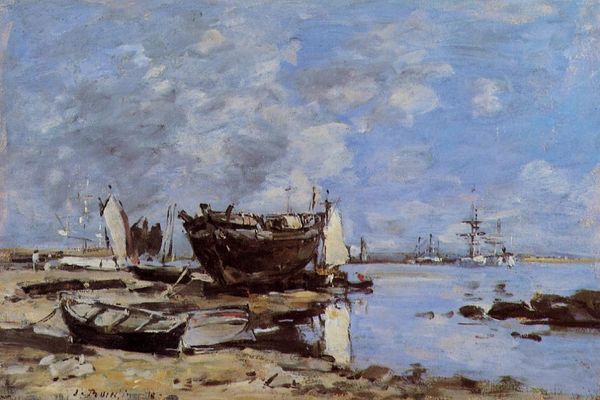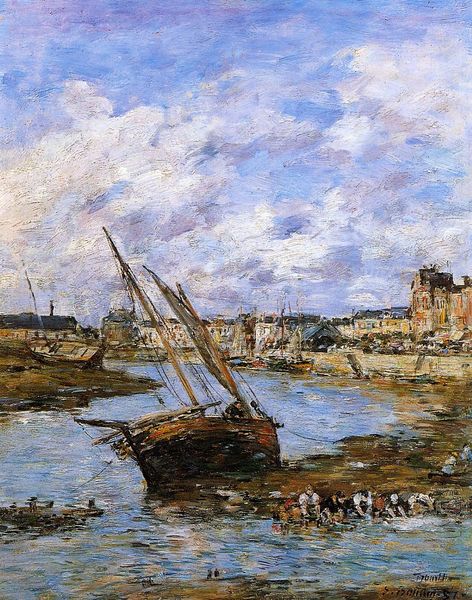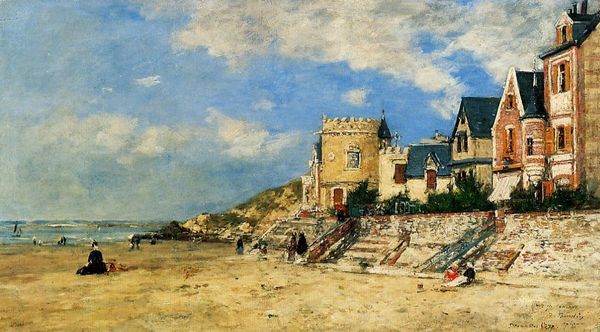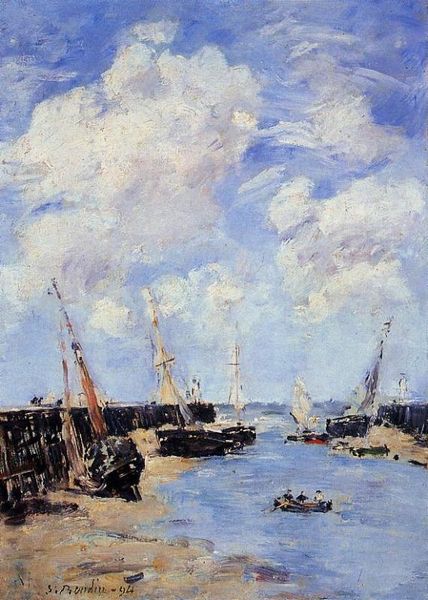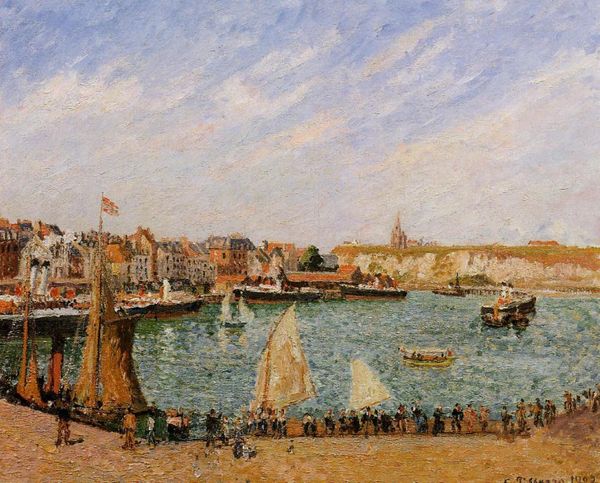
painting, plein-air, oil-paint, impasto
#
cliff
#
painting
#
impressionism
#
plein-air
#
oil-paint
#
landscape
#
impressionist landscape
#
figuration
#
oil painting
#
impasto
#
rock
#
seascape
#
watercolor
Copyright: Public domain
Curator: Looking at "The Cliffs at Dieppe and the 'Petit Paris'" by Eugène Boudin, I'm immediately drawn to the almost hazy atmosphere. There's a dreamlike quality in how the coastline blends into the sky. Editor: It is very blurry, as if everything is humid and in constant change, you can even smell it. My attention, however, lingers on the figures; they're so muted, practically disappearing into the canvas. Curator: Boudin was quite interested in plein-air painting, focusing his efforts on capturing the fleeting effects of light and weather. He wants to show how light and time work in shaping people and buildings, literally dissolving what would seem eternal. It really fits the seaside environment of Dieppe, once a booming port city. It makes sense he selected to observe the symbolic charge held by the coastal cliffs in the public imagination. Editor: Absolutely. And you can see it in his brushwork - those short, broken strokes applied to canvas, thick in places and allowing a very loose definition of figures and rocks. The impasto is actually more prominent on the clifs. He really lets you know this is not just what he saw but also how he constructed the image. Curator: This rapid technique perfectly suits his impressionistic approach and enhances the transient feel. You can perceive that ephemeral instant captured on the shore— a balance between sky, rock, town and humankind in all their insignificance. It brings forth the historical narratives associated with the coast. Editor: That focus on surface and material brings up how this art became associated to bourgeois life: from materials and clothing, everything starts resembling the other thing in its manufactured shine, and so painting becomes its depiction. Boudin understood the rise of painting from nature as being attached to capitalist society. Curator: Perhaps it's this blending of technique and subject matter that really gives the piece a deep evocative character. I keep considering how the motif of seaside has affected the popular mind. Editor: Indeed, there’s something about observing a past made by manufactured goods; by looking at this scenery, it tells more about who and how Boudin painted than the port city he chose to show. Curator: An exercise into remembrance through technique and iconography, how intriguing. Editor: Definitely plenty here to sink our teeth into in this depiction.
Comments
No comments
Be the first to comment and join the conversation on the ultimate creative platform.
